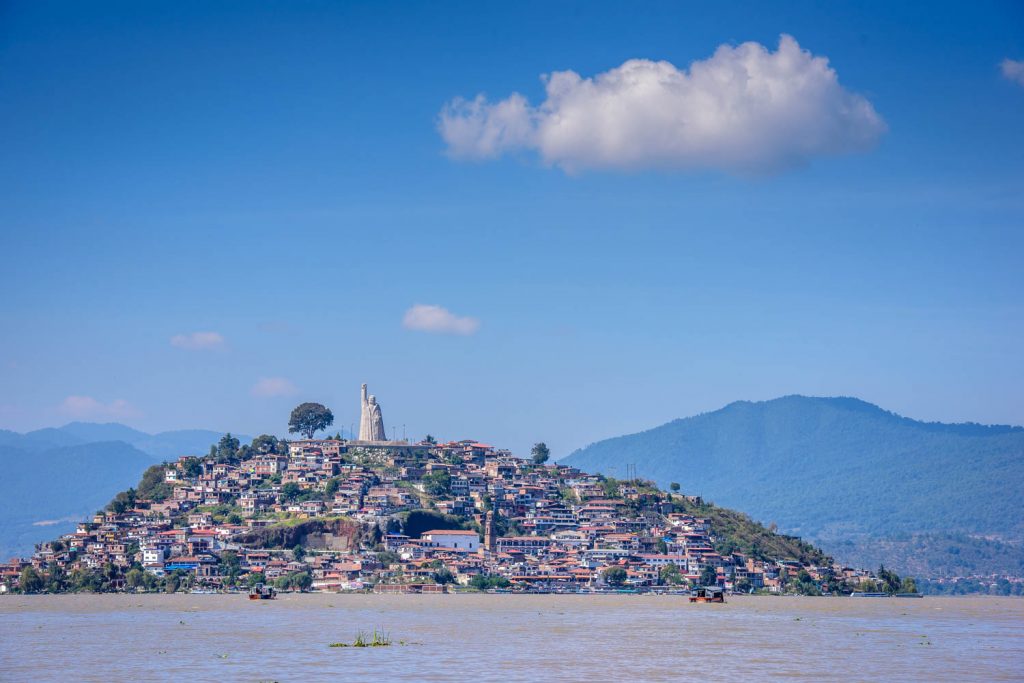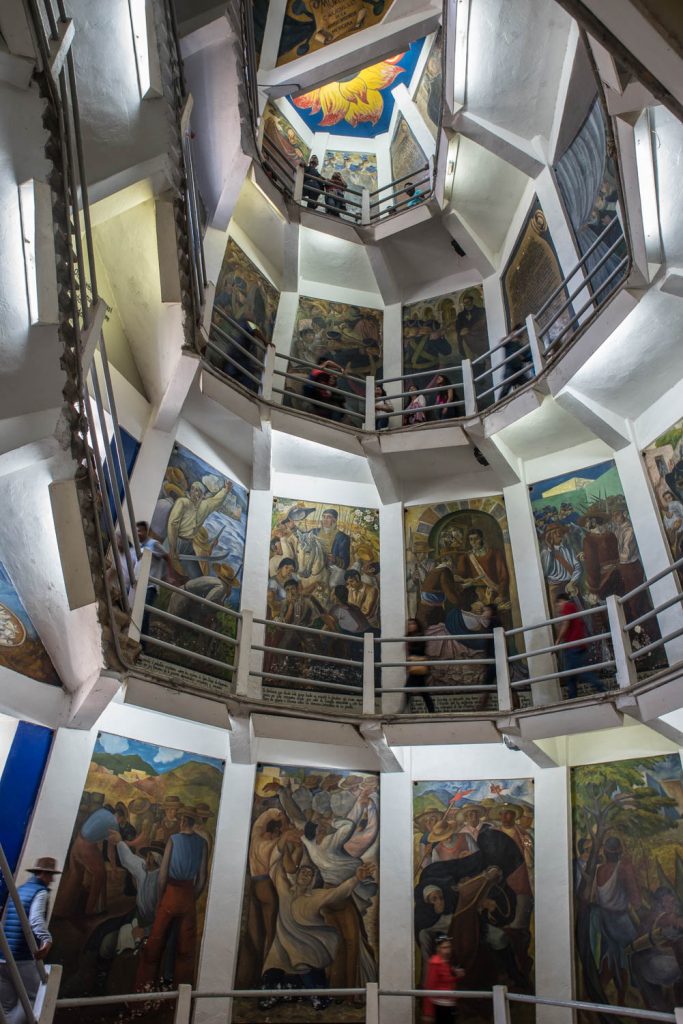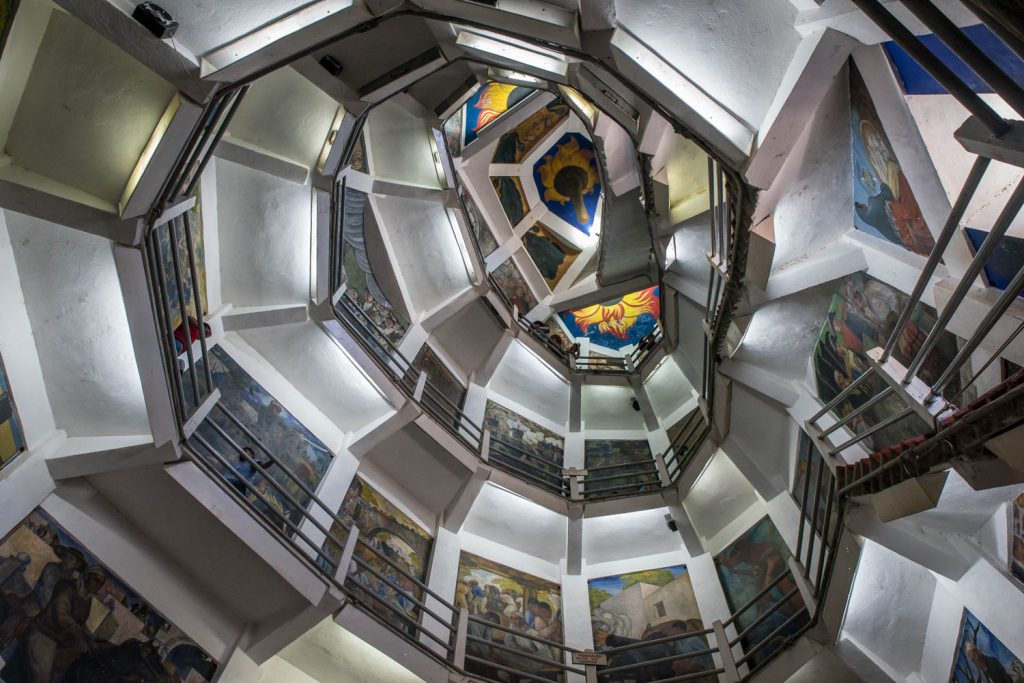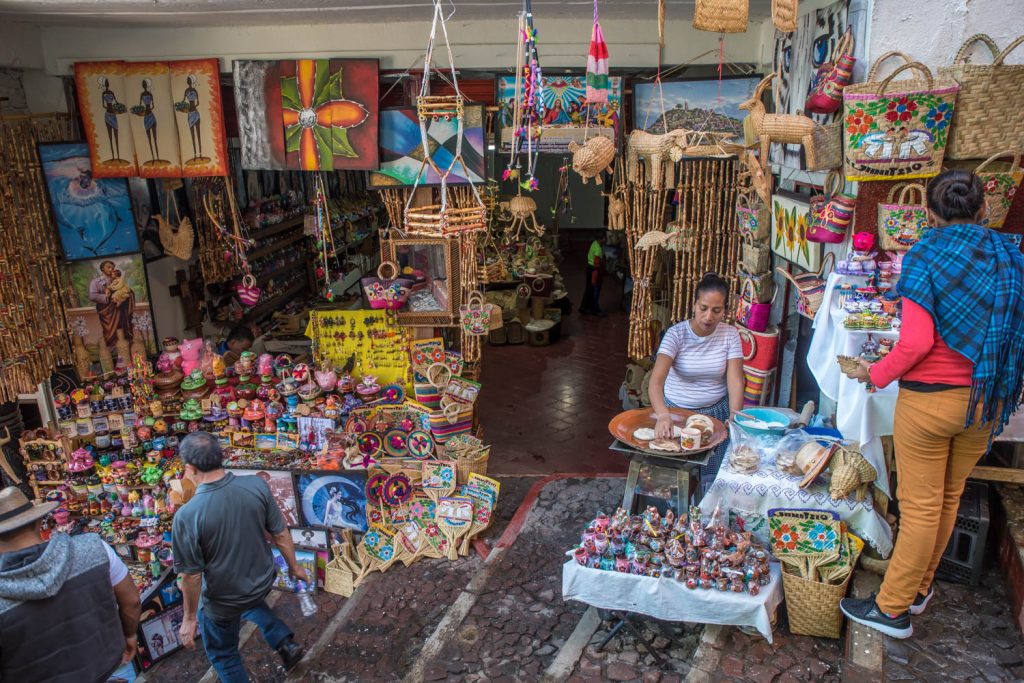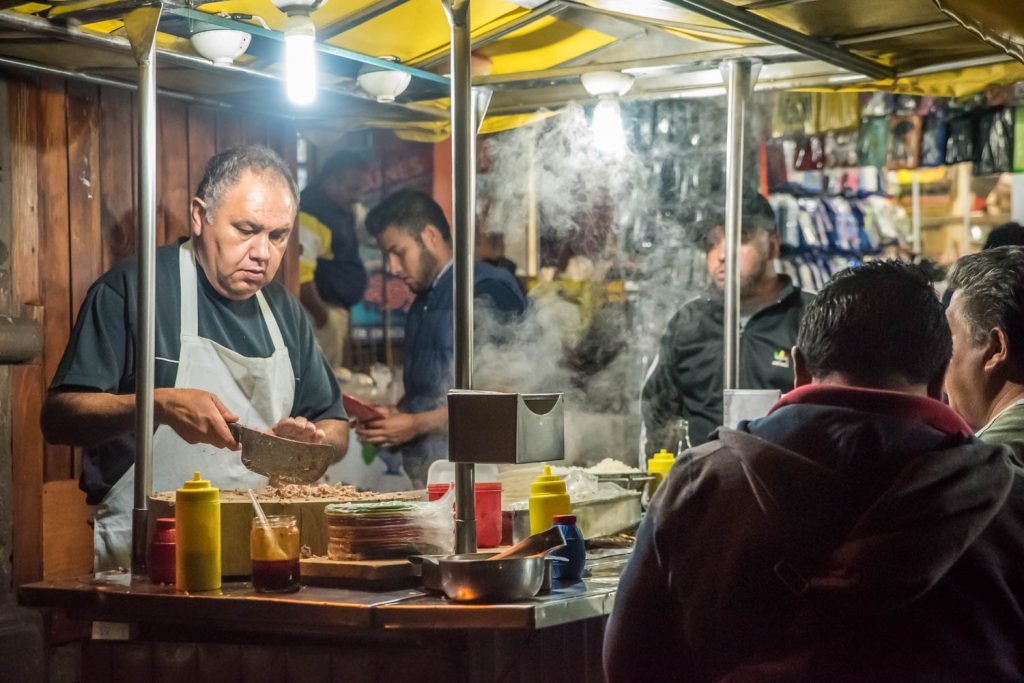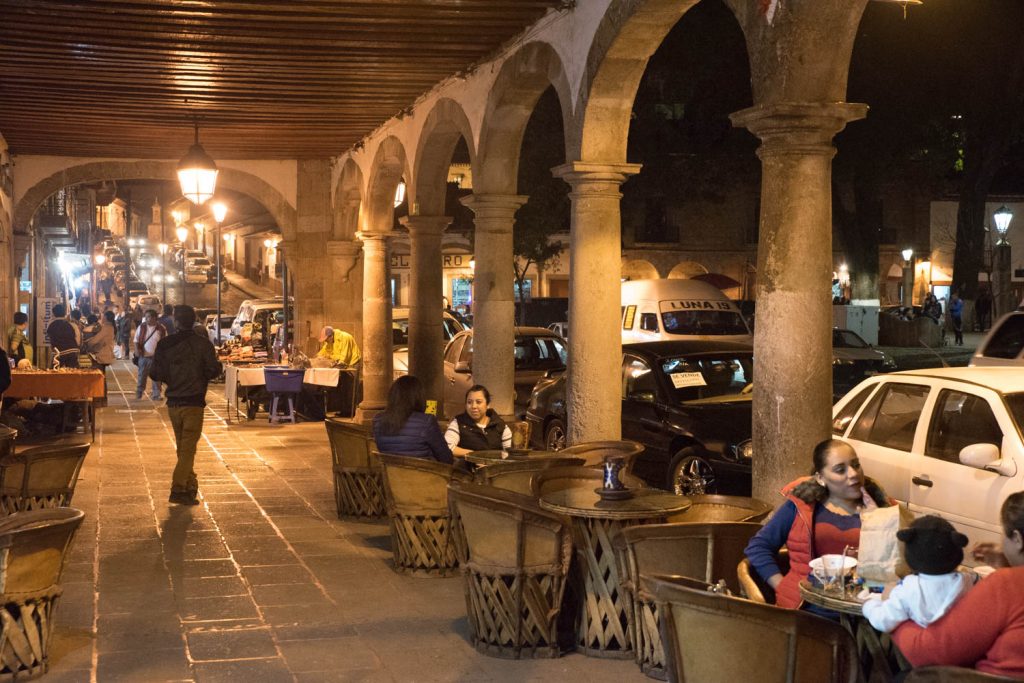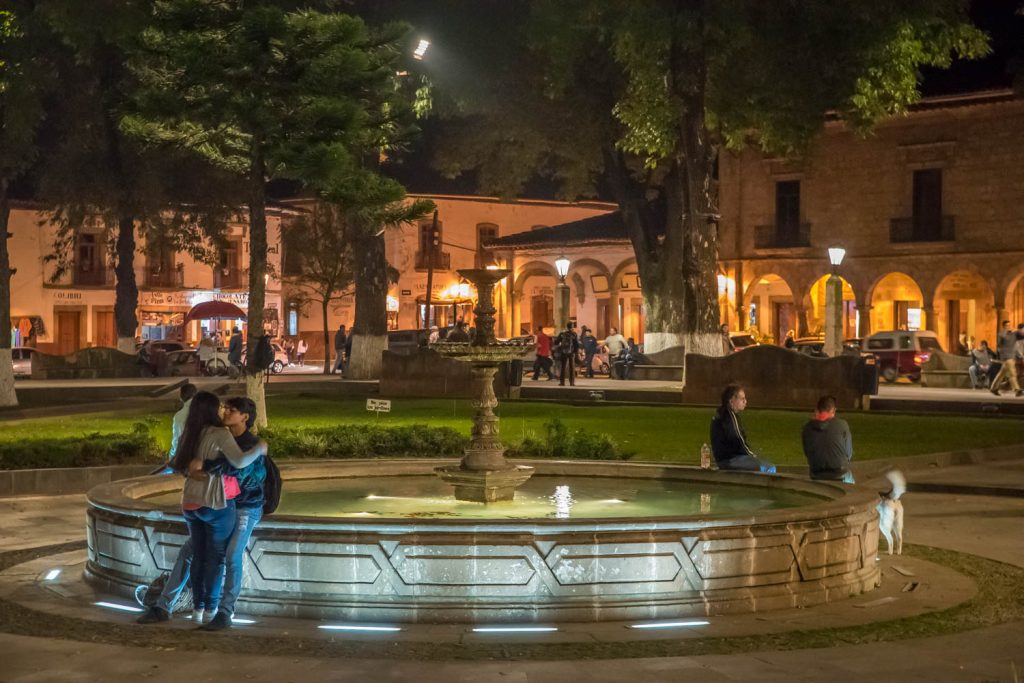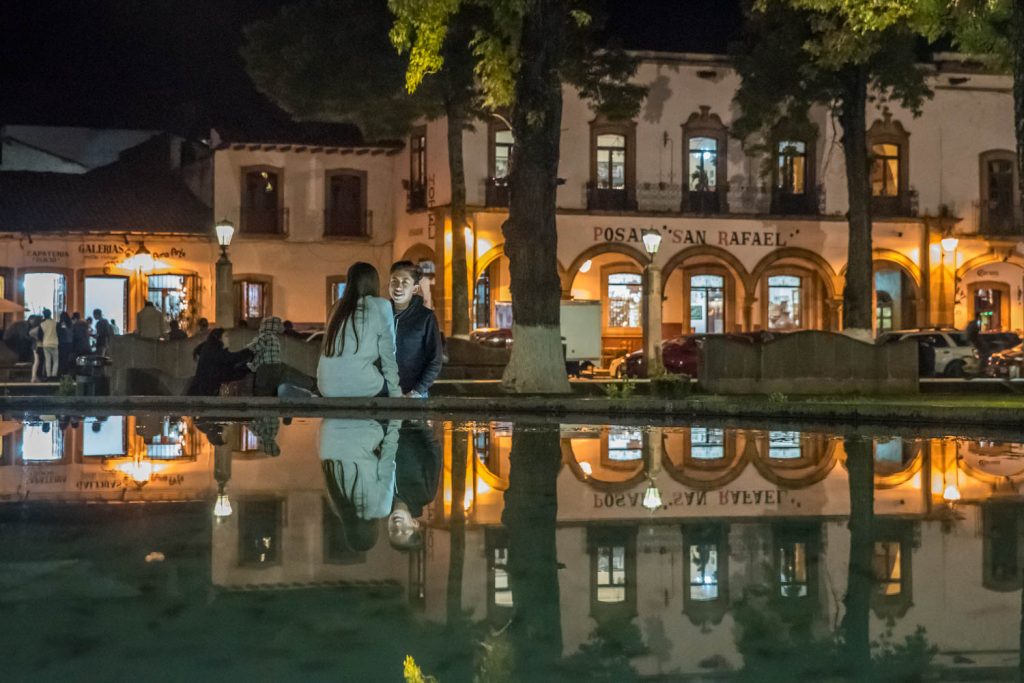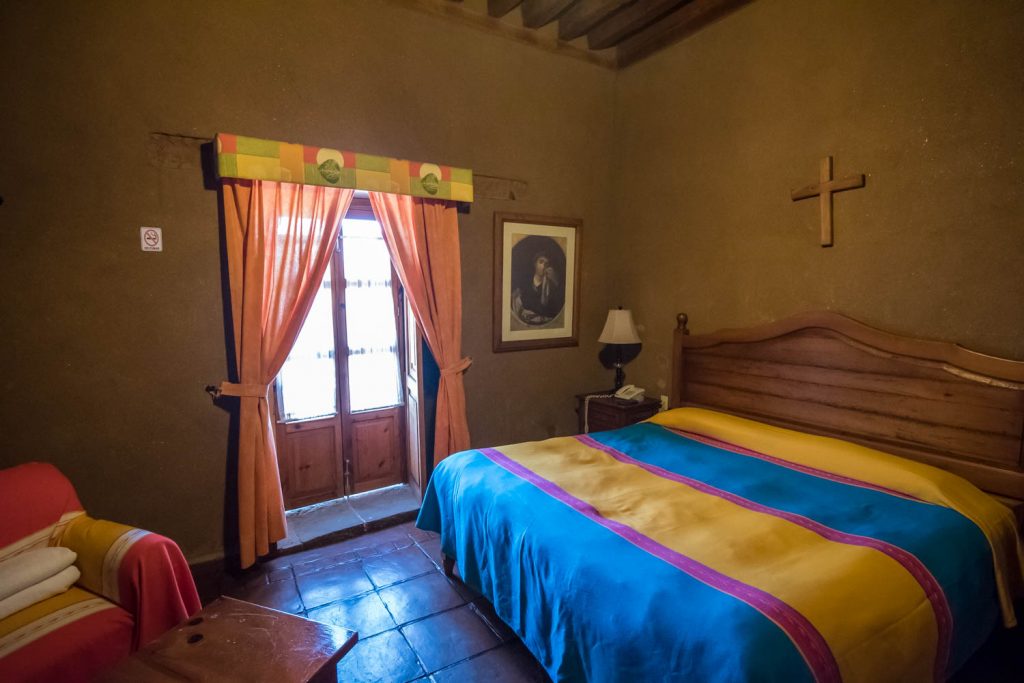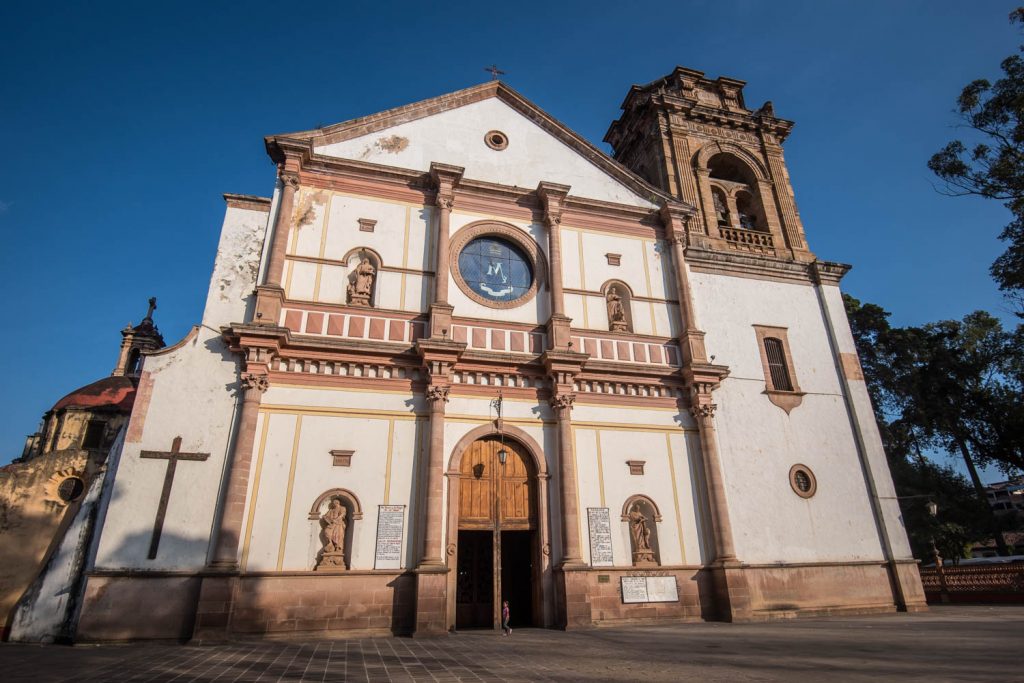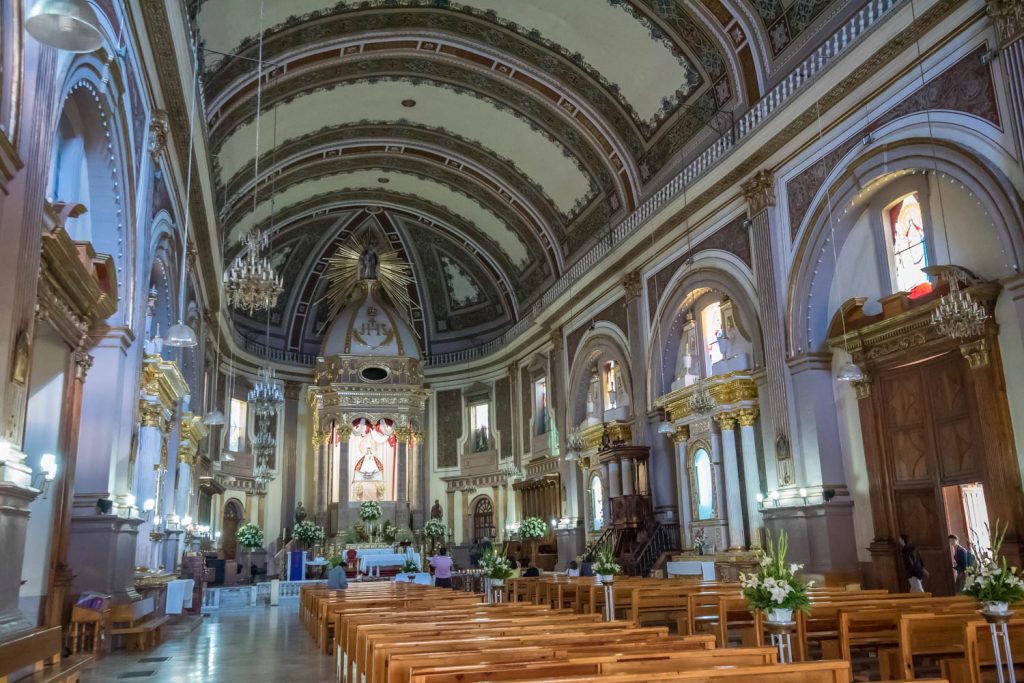
Isla Janitzio on Lago de Patzcuaro is a bit of a paradox.
From the distance, as you approach it by boat, it’s an attractive conical island out in the lake a few kilometres north of Patzcuaro.
The lake is ringed by mountains. It seems like a lovely spot.
But as you look closely at the water, you see that it’s a muddy brown. In fact, the lake is quite polluted.
And as you get close to Isla Janitzio, you see that it is crowned with a stone monstrosity at its peak. It is the ugliest statue of independence leader José Maria Morelos in all of Mexico.
Isla Janitzio is known for having one of the liveliest Day of the Dead festivals, but outside of that one time of year, it is simply a big tourist trap. Although I did hear two people talking in what sounded like American English, the vast majority of visitors were Mexican tourists.
As you approach the island, “fisherman” in canoe-like boats begin casting butterfly nets. A short while later, one of them paddles over to the tour boat, grabs a hold of it, and starts asking people for tips. Apparently, this kind of net fishing is no longer economical, but it does make an interesting tourist attraction.
When you step ashore, you are met with hundreds of vendors selling trashy souvenirs, refreshments, or fried fish, apparently from the polluted lake.
Thankfully, there are no vehicles on Isla Janitzio. Instead of roads, there are just long, twisty walkways up numerous stairs, past more and more souvenir stands and fish restaurants.
At the top of the climb, of course, is the ugly statue of Morelos. After buying a ticket, you go through turnstile and then you can climb into his belly. A narrow walkway with a low railing spirals up higher and higher, lined by murals depicting his life.
If you make it to the top, you can get a view from inside the wrist of his raised right hand.
I could handle the height by itself without suffering vertigo, but what got to me was the crowds of people trying to squeeze past in both directions on this narrow catwalk. So, while I made it to the top of his belly, I had had enough before I got into his wrist.
Often when I am in a foreign country, I enjoy visiting the attractions that local tourists visit because they say something about the culture, and it is fun to observe people enjoying themselves.
I loved Xochimilco, the canals filled with colourful boats near Mexico City, which I have visited on other trips, for example.
I even enjoy kitsch sometimes in the right dose. Places like Niagara Falls or Las Vegas can be fun for their extreme kitschiness. But Isla Janitzio makes even Niagara Falls look like a paragon of good taste.
I was glad I made the trip so that I could see it, but my regret was that I didn’t have the time to visit some of the villages that ring the lake and are probably much more genuine, while offering similar scenery.
I got a late start today, because I spent the first part of the morning getting organized for my trip home.
Tomorrow I’ll leave Patzcuaro early, and catch a bus to Morelia. Then if time allows, I’d like to spend a couple of hours in the centre of this Spanish colonial city, that resembles a city in Spain.
I’ll need to get to the airport in time to catch a late afternoon flight to Tijuana for my last night in Mexico.
(Below see more shots of Isla Janitzio as well as more from Patzcuaro)
